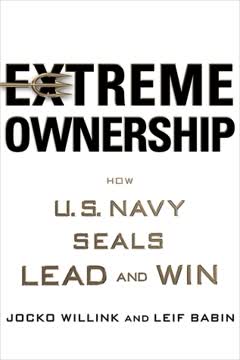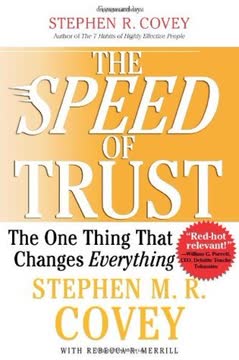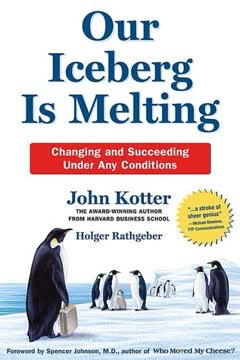Key Takeaways
1. Business fundamentals are universal, from street vendors to CEOs
The language of business is the same everywhere.
Universal business principles. Whether you're running a fruit stand or a Fortune 500 company, the core principles of business remain constant. Every organization must serve its customers, manage cash effectively, use assets wisely, and continuously improve and grow. These fundamentals form the foundation of business acumen, allowing leaders to cut through complexity and make sound decisions.
From street to suite. Many successful CEOs have roots similar to street vendors, learning the basics of business through hands-on experience. This early exposure to the universal language of business shapes their thinking and decision-making processes. By understanding these fundamentals, anyone can develop the street smarts necessary to succeed in business, regardless of their formal education or the size of their company.
2. Focus on customers, cash generation, return on invested capital, and growth
Cash generation is one of several important indications of your company's moneymaking ability.
Customer focus. Satisfying customer needs is the cornerstone of any successful business. Companies must continually adapt to changing customer preferences and market conditions to stay competitive. This requires a deep understanding of who your customers are and what they truly value.
Financial pillars. Cash generation, return on invested capital (ROIC), and growth are critical indicators of a company's financial health and future prospects.
- Cash generation: The difference between cash inflows and outflows
- ROIC: A measure of how efficiently a company uses its capital to generate profits
- Growth: Sustainable, profitable expansion of the business
Balancing these elements is crucial for long-term success. Companies must generate sufficient cash to fund operations and investments, earn returns above their cost of capital, and grow in a way that creates value for shareholders and opportunities for employees.
3. Understand your company's financial statements to gauge its health
In the same way a doctor uses certain measurements like your pulse, blood pressure, and weight to help diagnose your health, an organization's financials can help you diagnose the health of your company—or any company.
Key financial statements. To assess a company's health, focus on three main financial statements:
- Income statement (P&L): Shows revenues, costs, and profitability
- Balance sheet: Summarizes assets, liabilities, and shareholders' equity
- Cash flow statement: Tracks cash inflows and outflows
Critical metrics. Pay attention to key metrics within these statements:
- Revenue growth
- Gross margin
- Operating expenses
- Net profit margin
- Cash position
- Inventory turnover
- Accounts receivable and payable
By understanding these numbers and their trends, you can gain insights into a company's operational efficiency, profitability, and financial stability. This knowledge is crucial for making informed decisions and identifying areas for improvement.
4. Create wealth by managing your company's price-earnings ratio
A company's P/E ratio has a true multiplier effect. It really can turn money into wealth.
P/E ratio explained. The price-earnings (P/E) ratio is a key metric for publicly traded companies, representing the market's expectations of a company's future earnings potential. It is calculated by dividing the stock price by earnings per share. A higher P/E ratio indicates that investors expect higher earnings growth in the future.
Wealth creation strategies. To increase the P/E ratio and create wealth:
- Consistently deliver strong financial results
- Communicate a clear growth strategy to investors
- Demonstrate operational excellence and market leadership
- Invest in high-growth areas of the business
- Manage investor expectations effectively
By focusing on these areas, companies can improve their P/E ratios, creating more value for shareholders and potentially attracting top talent who seek to join successful, growing organizations.
5. Put the right people in the right jobs and coach them effectively
Without the right people in the right jobs, a company cannot grow and thrive.
Talent alignment. Matching employees' skills, aptitudes, and attitudes with the right roles is crucial for organizational success. This requires a deep understanding of both the business needs and individual strengths. Leaders must continually assess whether their team members are in positions where they can make the most significant impact.
Effective coaching. Developing talent through coaching is a critical leadership skill. Key aspects of effective coaching include:
- Providing honest, direct feedback on both business performance and behavior
- Focusing on strengths while addressing areas for improvement
- Offering specific, actionable guidance for development
- Creating stretch assignments to expand employees' capabilities
- Following up consistently to ensure progress
By investing in talent development and aligning people with the right roles, organizations can significantly enhance their execution capabilities and overall performance.
6. Synchronize efforts across the organization for better execution
Synchronization expands the organization's capacity.
Organizational alignment. As companies grow, coordinating efforts across different departments and teams becomes increasingly challenging. Synchronization is crucial for ensuring that all parts of the organization are working towards the same goals efficiently and effectively.
Breaking down silos. To improve synchronization:
- Establish clear, company-wide priorities
- Improve communication channels between departments
- Create cross-functional teams for key initiatives
- Implement systems for sharing information and best practices
- Align incentives across the organization
By fostering a culture of collaboration and ensuring that all parts of the organization are working in harmony, companies can significantly enhance their execution capabilities and achieve better results.
7. Use social operating mechanisms and dialogue to enhance decision-making
Dialogue is the single most important factor underlying the productivity and growth of the knowledge worker.
Social operating mechanisms. These are structured interactions designed to bring people together, share information, and make decisions. Examples include:
- Regular strategy meetings
- Cross-functional project teams
- Weekly performance reviews
- Town hall meetings
Effective dialogue. To improve the quality of conversations and decision-making:
- Encourage open and honest communication
- Create a safe environment for sharing diverse perspectives
- Ask probing questions to uncover underlying assumptions
- Listen actively and avoid snap judgments
- Drive towards clear decisions and action plans
By implementing effective social operating mechanisms and fostering productive dialogue, organizations can make better decisions faster, adapt to changing circumstances more easily, and ultimately execute their strategies more successfully.
Last updated:
FAQ
What's "What the CEO Wants You To Know" about?
- Understanding Business Fundamentals: The book explains the universal principles of business that apply to all organizations, from street vendors to Fortune 500 companies.
- CEO Insights: It provides insights into how successful CEOs think and operate, focusing on moneymaking fundamentals.
- Practical Application: The book aims to help readers understand how their company works and how they can contribute to its success.
- Business Acumen: It emphasizes the importance of business acumen and how it can be developed and applied in real-world scenarios.
Why should I read "What the CEO Wants You To Know"?
- Gain Business Clarity: The book simplifies complex business concepts, making them accessible to everyone, regardless of their background.
- Improve Job Performance: Understanding the fundamentals can lead to greater job satisfaction and career advancement.
- Universal Application: The principles discussed are applicable to any organization, including nonprofits and government agencies.
- Learn from Experts: The author, Ram Charan, shares insights from his extensive experience working with top CEOs and companies worldwide.
What are the key takeaways of "What the CEO Wants You To Know"?
- Universal Business Principles: Every business must serve customers, manage cash, use assets wisely, and grow.
- Focus on Fundamentals: Successful CEOs focus on moneymaking fundamentals and ensure everyone in the company understands them.
- Execution is Key: Understanding business is one thing, but executing effectively is crucial for success.
- Personal Development: Developing business acumen and understanding the total business can lead to personal and professional growth.
How does Ram Charan define business acumen in the book?
- Street Smarts: Business acumen is likened to street smarts, the ability to understand how a business makes money.
- Focus on Fundamentals: It involves understanding customers, cash generation, return on invested capital, and growth.
- Practical Application: Business acumen is about applying these fundamentals to make informed decisions and drive success.
- Continuous Learning: It requires ongoing observation, learning, and adaptation to changing business environments.
What are the four key elements every business needs to master according to the book?
- Satisfying Customers: Understanding and meeting customer needs better than the competition is crucial.
- Generating Cash: Effective cash management is essential for sustaining and growing a business.
- Return on Invested Capital: Businesses must use their capital efficiently to generate returns.
- Profitable Growth: Growth should be sustainable and accompanied by improved margins and velocity.
How does "What the CEO Wants You To Know" relate to both CEOs and street vendors?
- Universal Language: Both CEOs and street vendors use the same fundamental business principles.
- Focus on Essentials: They focus on cash, customers, and inventory, regardless of business size.
- Practical Examples: The book uses examples from both to illustrate how these principles apply universally.
- Shared Mindset: Successful businesspeople, whether CEOs or vendors, think like businesspeople first.
What advice does Ram Charan give for improving execution in a business?
- Right People, Right Jobs: Ensure that individuals are well-matched to their roles to maximize effectiveness.
- Coaching and Development: Leaders should coach employees to expand their capacity and improve performance.
- Synchronization: Align efforts across the organization to ensure everyone is working towards common goals.
- Focus on Priorities: Set clear, specific priorities and focus resources on achieving them.
How does the book suggest handling mismatches between people and jobs?
- Recognize Mismatches: Identify when a person's talents do not align with their job requirements.
- Take Action: Address mismatches promptly to prevent negative impacts on the business and the individual.
- Reassign or Release: Consider reassigning the person to a better-suited role or helping them find a new opportunity.
- Support and Feedback: Provide constructive feedback and support to help individuals find their best fit.
What role does dialogue play in business execution according to the book?
- Open Communication: Encourage open and honest dialogue to share information and ideas effectively.
- Candor and Informality: Foster an environment where people feel comfortable speaking candidly and informally.
- Closure and Accountability: Ensure discussions lead to clear decisions and accountability for actions.
- Cultural Impact: Dialogue shapes corporate culture and influences behavior and decision-making.
What are some of the best quotes from "What the CEO Wants You To Know" and what do they mean?
- "Business is very simple and very logical." This emphasizes the book's core message that business fundamentals are straightforward and universally applicable.
- "The best CEOs are like the best teachers." It highlights the importance of simplifying complex ideas and ensuring everyone understands the business.
- "Execution is the art and discipline of getting things done." This underscores the importance of effective execution in achieving business success.
- "Every business is the same inside." It reinforces the idea that all businesses share the same fundamental building blocks.
How does the book address the concept of growth in business?
- Vital for Prosperity: Growth is essential for the long-term success and sustainability of any business.
- Profitable and Sustainable: Growth should be accompanied by improved margins and efficient use of capital.
- Opportunities for Innovation: Growth often involves finding new ways to meet customer needs and expand market share.
- Avoiding Bad Growth: The book warns against unprofitable growth that can harm the business in the long run.
How can understanding the P/E ratio help in creating wealth according to the book?
- Link to Wealth Creation: The P/E ratio links a company's moneymaking ability to wealth creation for shareholders.
- Market Expectations: It reflects market expectations about a company's current and future performance.
- Comparison Tool: The P/E ratio allows for comparison with competitors and the broader market.
- Impact of Consistency: Consistent performance can lead to a higher P/E ratio, creating more wealth for shareholders.
Review Summary
What the CEO Wants You To Know by Ram Charan receives generally positive reviews, with readers praising its simplicity and clarity in explaining business fundamentals. Many find it helpful for understanding how companies operate and make money. The book draws parallels between large corporations and small businesses, emphasizing universal principles. Some readers consider it essential for those new to business, while others find it a useful refresher. A few criticize it for being too basic or repetitive, but most appreciate its practical insights and real-world examples.
Similar Books










Download PDF
Download EPUB
.epub digital book format is ideal for reading ebooks on phones, tablets, and e-readers.









